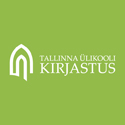Factors Facilitating and Hindering Deep-Level Collaboration Between Subject and Language Teachers in the Estonian CLIL Context
Abstract
Content and language integrated learning (CLIL) has been employed in Estonia and worldwide for decades. This methodology involves teaching academic subjects in a foreign or second language and enables learners to develop their subject knowledge, language skills and cognitive abilities. Oftentimes, both subject teachers and language teachers are involved in CLIL instruction, and its efficiency depends on collaboration between the educators. The study aims at pinpointing the factors that facilitate or hinder deep-level cross-curricular teacher collaboration in the Estonian CLIL context as well as the outcomes of such collaboration. The interviews with in-service teachers (12) who had taken part in a CLIL tandem teaching project allowed for the identification of 26 facilitators distributed across 7 levels (structural, personal, organisational, CLIL-, group-, process- and guidance-related) and 13 barriers distributed across 4 levels (structural, personal, organisational and group-related). The teachers perceived the collaboration as beneficial to them and their pupils, and the factors facilitating it were mentioned more frequently than hindering ones at all levels except the organisational one. Therefore, the findings of this study suggest that the organisational level barriers should be primarily addressed while designing deep-level collaborative experiences for teachers.
Keywords: co-teaching, teacher tandem, levels of collaboration, content and language integrated learning
Full Text:
PDFDOI: https://doi.org/10.22601/PET.2023.08.06
Refbacks
- There are currently no refbacks.
Published by / Kirjastaja:

ISSN 2504-6616 (print/trükis)
ISSN 2504-6624 (online/võrguväljaanne)
